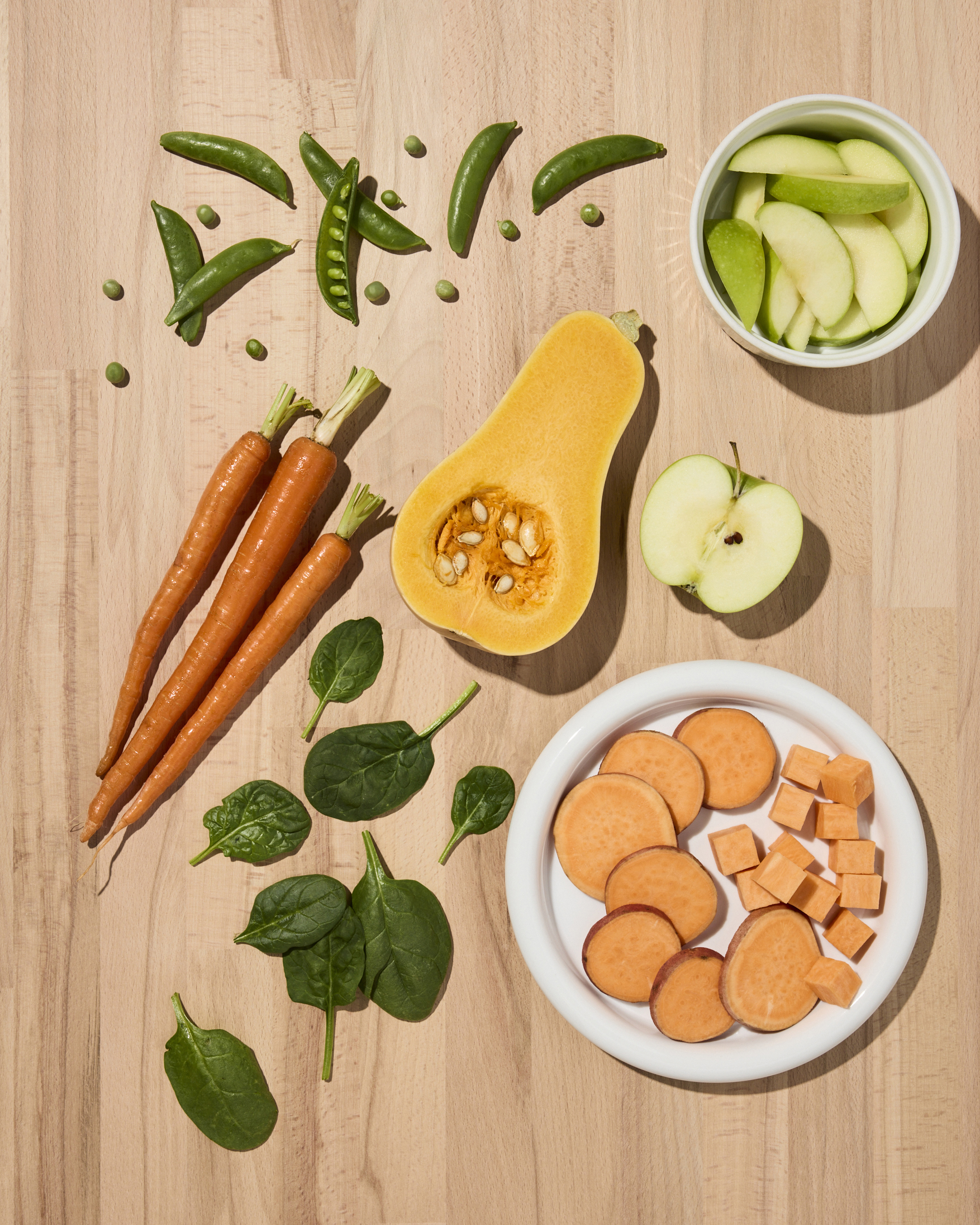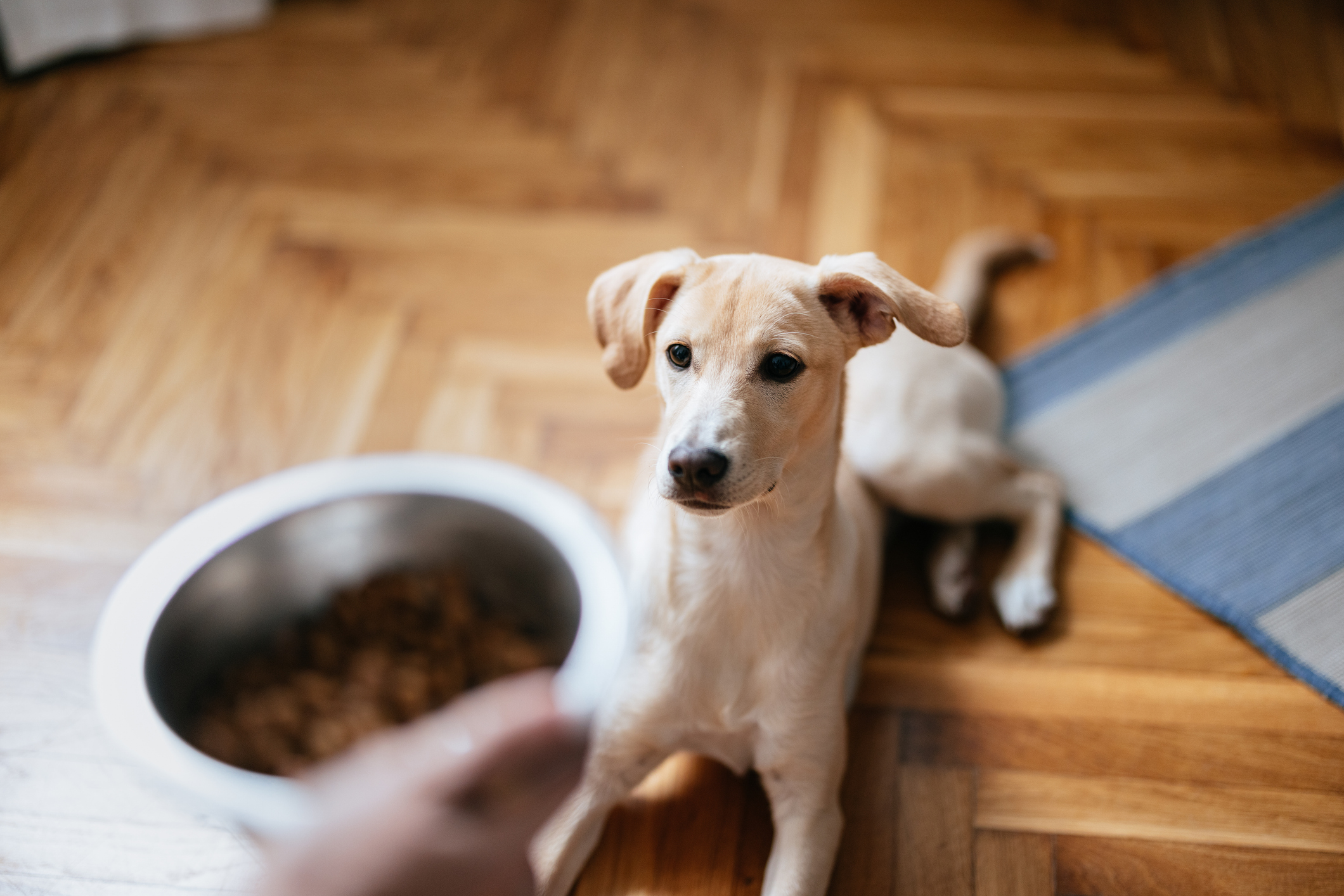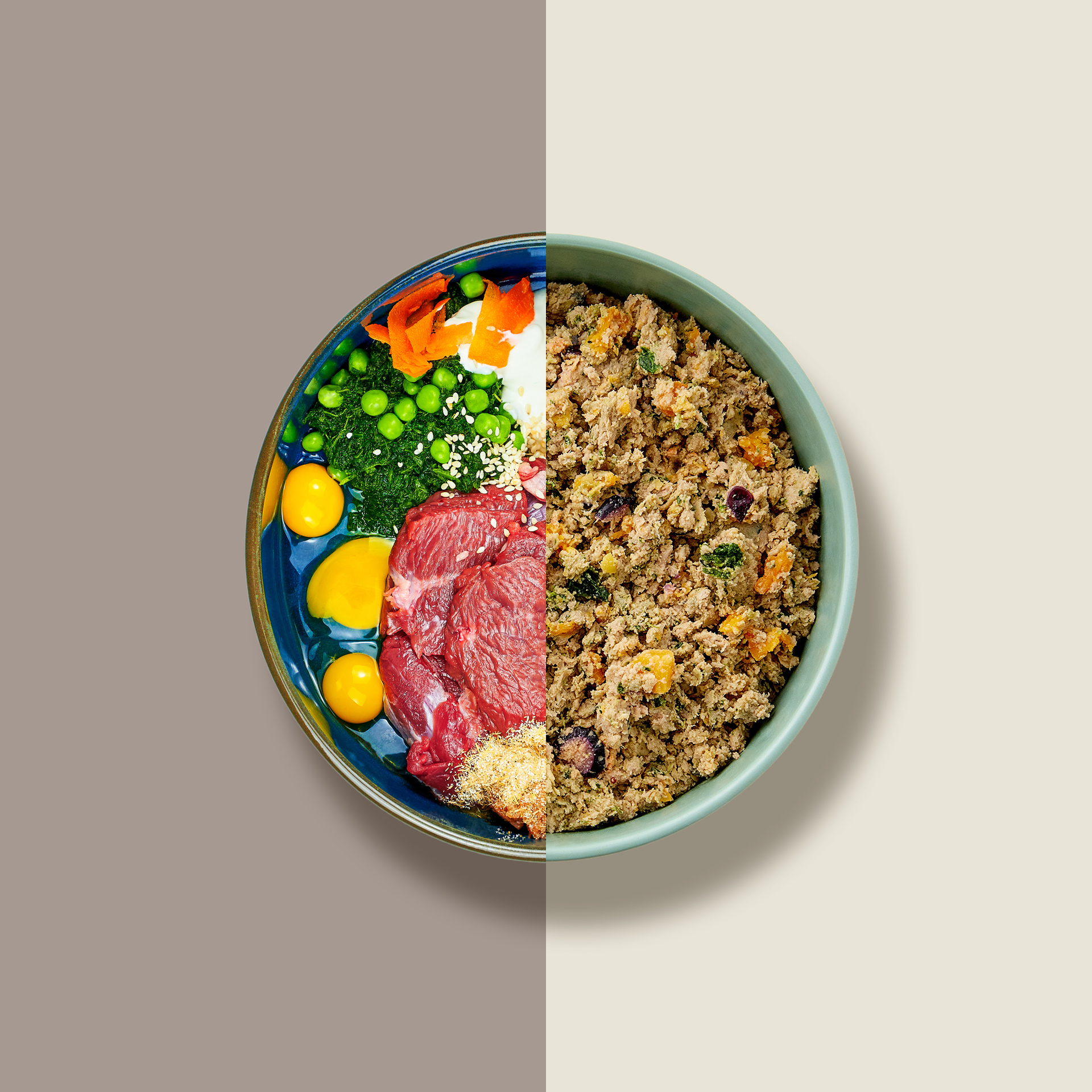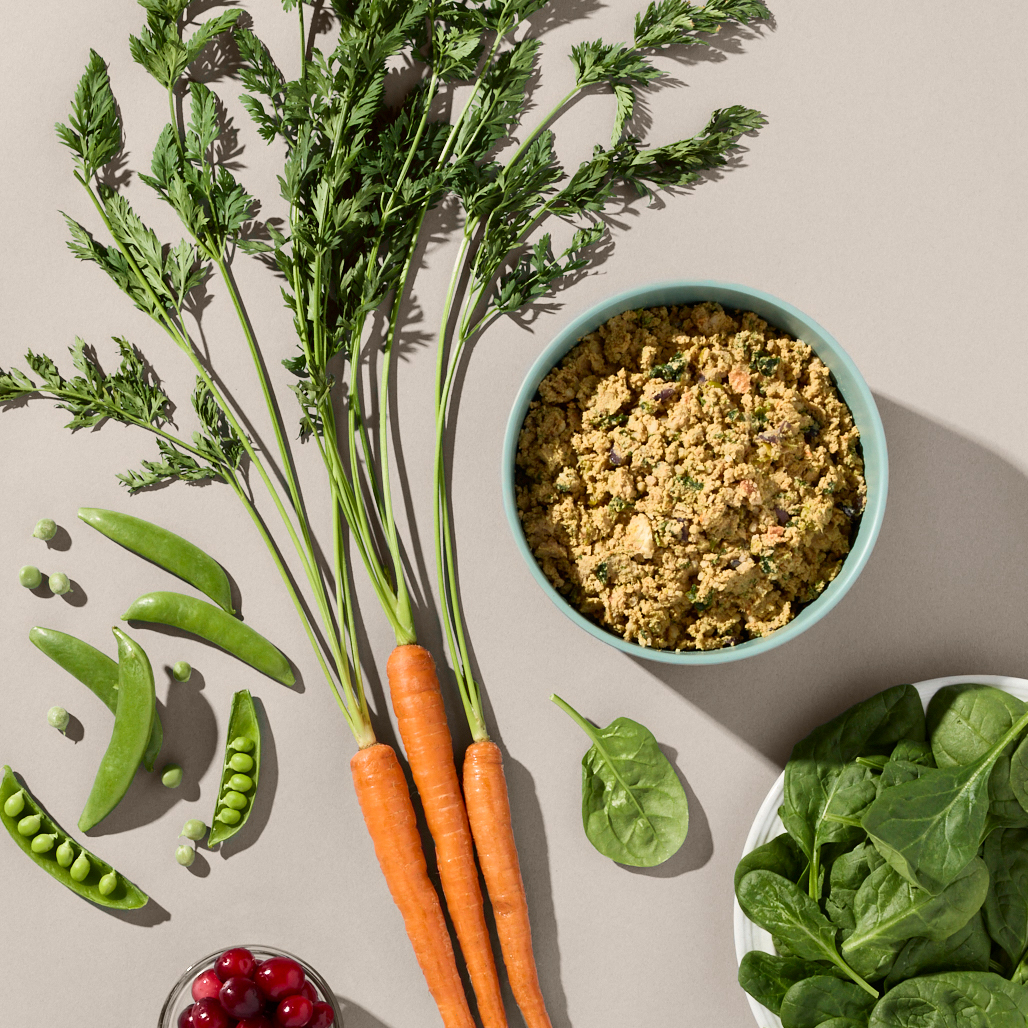Hey Ollie blog readers! We’re offering you an exclusive 60% OFF your starter box! Try now!
As a dog parent, seeing your pup struggle with itchy skin, an upset stomach, or persistent ear infections is always stressful. Limited ingredient dog food has become a popular choice for pup parents trying to manage suspected food allergies or sensitivities. The idea is simple: by reducing the number of ingredients your dog eats, you can more easily pinpoint what might be causing them discomfort. But is an LID always the right answer? This article will help you understand what these diets are, when they might be helpful, and how to choose the best nutritional path for your pup.
What Is a Limited Ingredient Diet (LID)?
A limited ingredient diet is a type of dog food formulated with a minimal number of ingredients. The goal is to reduce your dog’s exposure to potential allergens or ingredients that cause sensitivity. While the term “limited ingredient” isn’t strictly regulated in the pet food industry, a true LID typically features:
- A Single Novel Protein: Instead of common proteins like chicken or beef, which are frequent culprits in food allergies, LIDs often use a “novel” protein—one your dog has likely never eaten before, such as duck, lamb, or salmon. The logic is that a dog is less likely to be allergic to an ingredient they’ve never been exposed to.
- A Single Carbohydrate Source: To further simplify the formula, these diets usually include just one easily digestible carbohydrate, like sweet potatoes or peas.
- No Common Fillers or Additives: LIDs generally avoid common fillers like corn, wheat, and soy, as well as artificial colors, flavors, and preservatives that can sometimes trigger reactions.
By simplifying the meal, an LID can serve as a diagnostic tool to help you and your veterinarian identify specific ingredients that may be causing your dog’s issues.

Signs Your Dog Might Have a Food Allergy or Sensitivity
While environmental factors are a more common cause of allergies in dogs, food can be the source of significant discomfort for some pups. If you notice any of the following symptoms, a food sensitivity could be to blame:
- Skin Issues: Persistent scratching, itchy or flaky skin, hot spots, and poor coat health.
- Ear Infections: Chronic or recurring inflammation and infections in the ears.
- Digestive Upset: Frequent diarrhea, vomiting, or gas.
- Paw Licking: Constant licking or chewing of the paws.
- Behavioral Changes: Hyperactivity or lethargy.
If your dog is experiencing these signs, the first step should always be a conversation with your veterinarian to rule out other medical conditions.
How LIDs Can Help Manage Dog Allergies
For the small percentage of dogs with confirmed food allergies, a limited ingredient diet can be a game-changer. Here’s how it works as part of a veterinarian-supervised elimination trial:
- Eliminate: Your vet will recommend switching your dog exclusively to an LID for 8–12 weeks. This means no other foods, treats, or table scraps.
- Evaluate: During this period, you’ll monitor your dog’s symptoms. If the issues were caused by a food allergy, you should see a significant improvement in their skin, digestion, and overall comfort.
- Reintroduce: Once symptoms have resolved, you can start reintroducing old ingredients one at a time, under your vet’s guidance, to see which one triggers the reaction.
This process is the most reliable way to diagnose a food allergy and create a long-term feeding plan that keeps your dog happy and healthy.
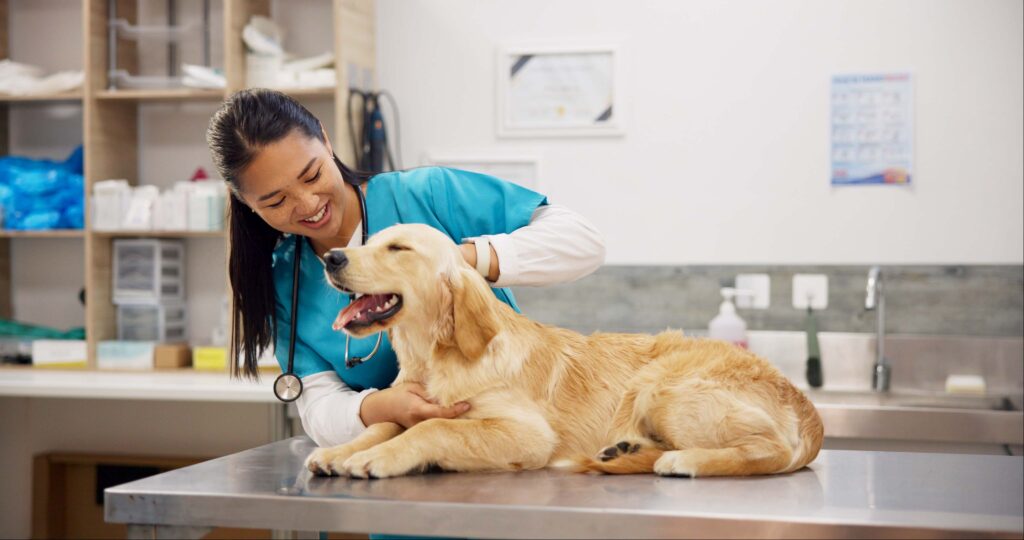
Potential Benefits of an LID
When used appropriately, a limited ingredient diet can offer several advantages:
- Allergen Identification: It’s the most effective way to pinpoint the specific ingredient causing an allergic reaction.
- Improved Digestion: Simple, easily digestible ingredients can soothe a sensitive stomach and promote more regular bowel movements.
- Healthier Skin and Coat: By removing the inflammatory trigger, LIDs can help resolve itching, reduce hot spots, and lead to a shinier, healthier coat.
Risks and Important Considerations
Before switching your dog to a highly restrictive diet, it’s crucial to understand the potential downsides.
Dr. Gary Weitzman, President of the San Diego Humane Society, cautions against assuming food is the problem. “A very small percentage of dogs actually have food allergies,” he notes. By focusing only on food, you risk overlooking other issues like “horrible skin allergies or gastrointestinal issues” that require different treatments.
Furthermore, there are nutritional risks. Very restrictive diets, especially those prepared at home without expert guidance, can lead to nutritional deficiencies. It’s also important not to use novel proteins unless necessary. As Dr. Shawn Messonnier, author of The Allergy Solution for Dogs, explains, “If your dog develops food allergies to any of these unusual protein sources, your choices of what to feed at that point are severely limited.”
Always consult your veterinarian before making any major changes to your dog’s diet. They can help you determine if an LID is the right approach or if another health issue is the true cause of your pup’s symptoms.
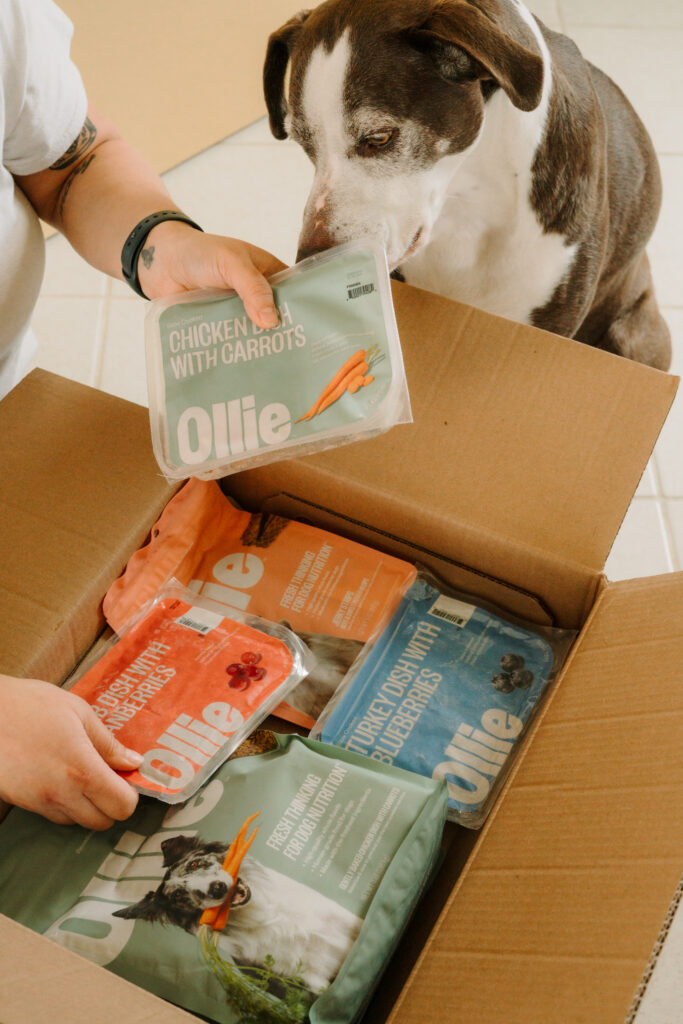
A Focus on Whole Foods: The Ollie Difference
While LIDs are a valuable tool for diagnosis, the ultimate goal for most dogs is a complete and balanced diet that supports their overall well-being. For many pups, symptoms like mild digestive upset or a dull coat can be improved simply by switching to a higher-quality food made with fresh, whole ingredients.
At Ollie, our recipes are designed with this philosophy in mind. While not strictly “limited ingredient,” they are made with human-grade meats, fruits, and vegetables, and contain no fillers, artificial flavors, or unnecessary additives.
- Gently Cooked for Digestibility: Our cooking process preserves the nutritional integrity of the ingredients, making them easy for your dog to digest.
- Formulated by Experts: Every recipe is formulated with veterinary nutritionists to be complete and balanced according to AAFCO standards.
- Personalized for Your Pup: We tailor your dog’s meal plan to their specific age, breed, weight, and activity level, ensuring they get the precise nutrition they need.
For many dogs, a fresh diet like Ollie’s provides the digestive support and high-quality nutrition needed to resolve sensitivities without the extreme restrictions of a traditional LID.
Ready to see the difference fresh food can make? Build your dog’s personalized meal plan with Ollie today!
Frequently Asked Questions (FAQs)
1. What is the difference between a food allergy and a food intolerance? A food allergy involves an immune system response to a protein, causing symptoms like itching, hives, and skin inflammation. A food intolerance or sensitivity is a digestive issue, where the body has trouble breaking down a certain ingredient, leading to gas, diarrhea, or vomiting. LIDs can help with both conditions.
2. How long does my dog need to be on an elimination diet? A typical elimination trial lasts for 8 to 12 weeks. It’s essential to be strict during this time to get accurate results. Your veterinarian will guide you on the exact duration and next steps.
3. Are all “limited ingredient” dog foods created equal? No. The term is not regulated, so the quality and number of ingredients can vary widely between brands. It’s important to read the ingredient label carefully to ensure it truly contains a single protein and carbohydrate and is free from unwanted additives.
4. Can I make a limited ingredient diet at home for my dog? While possible, it is not recommended without direct supervision from a veterinary nutritionist. It is very difficult to create a diet that is complete and balanced at home, and you run a high risk of causing nutritional deficiencies that can harm your dog’s health over time.
Tagged As:
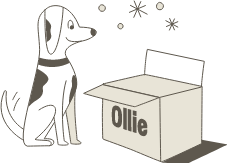
The nutrition your dog needs,
the food they want.

Enjoying our articles? Subscribe our Newsletters and get new articles directly to your inbox
You might also like
12 August 2025
5 MINS READ
Top 8 Allergens Hiding in Your Dog’s Bowl
As pup parents, we never want to see our dogs uncomfortable. When it comes to itching, swelling, and upset stomachs, the culprit may be in their bowl. Understanding the most common allergens and t…
by Ollie Pets
12 August 2025
5 MINS READ
Raw vs. Gently Cooked: Which Is Ideal for Your Pup?
As more pup parents seek the best fresh dog food for their companions, they may find themselves choosing between a raw diet and a fresh diet. While cases have been made for both options, let’s exa…
by Ollie Pets
12 August 2025
5 MINS READ
Why Human-Grade Ingredients Matter for Your Dog
A healthier, happier dog starts with the right food. That said, knowing which diet is best for your pup can be overwhelming at times. Understanding what human-grade means, why it matters, and how …
by Ollie Pets
